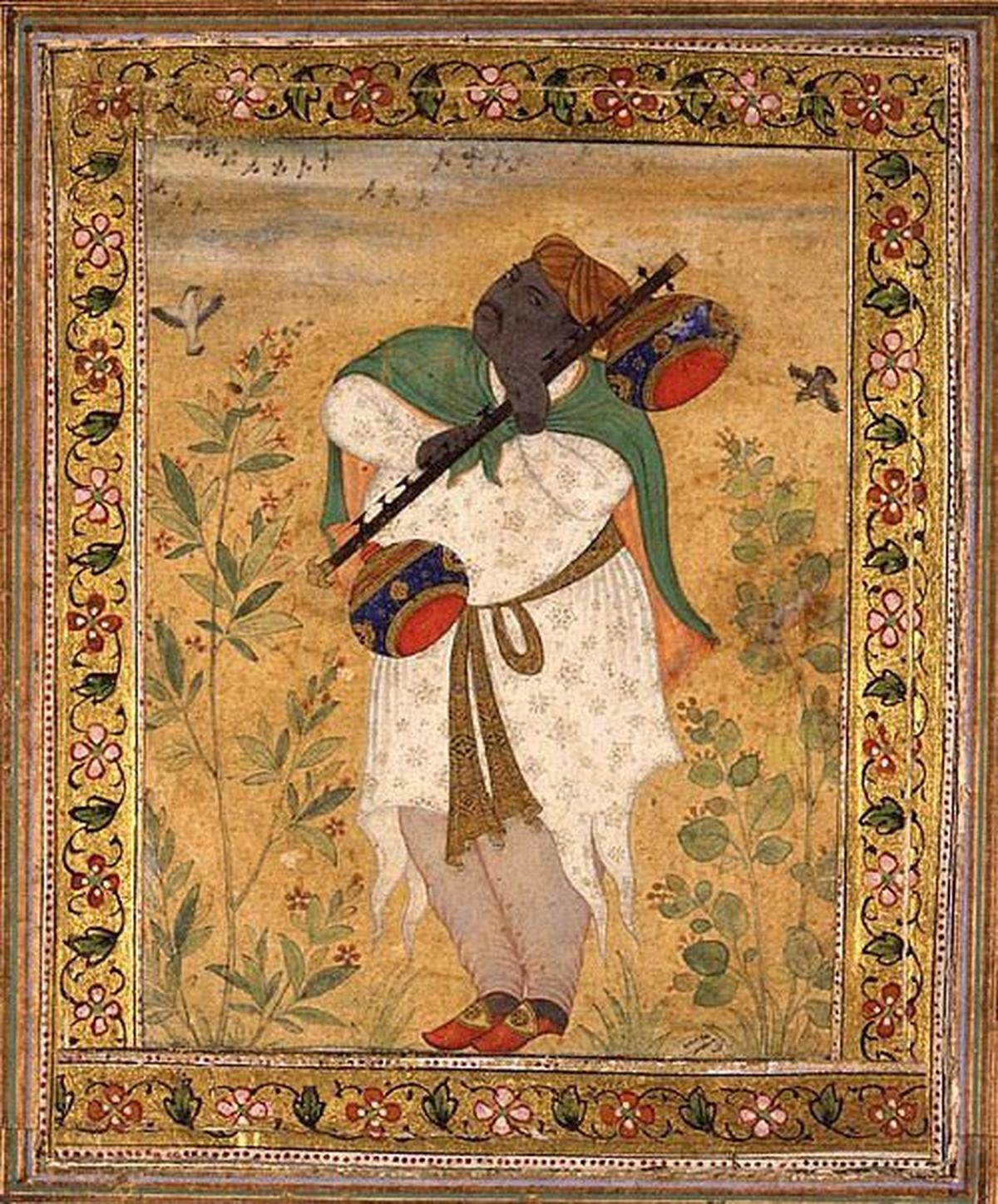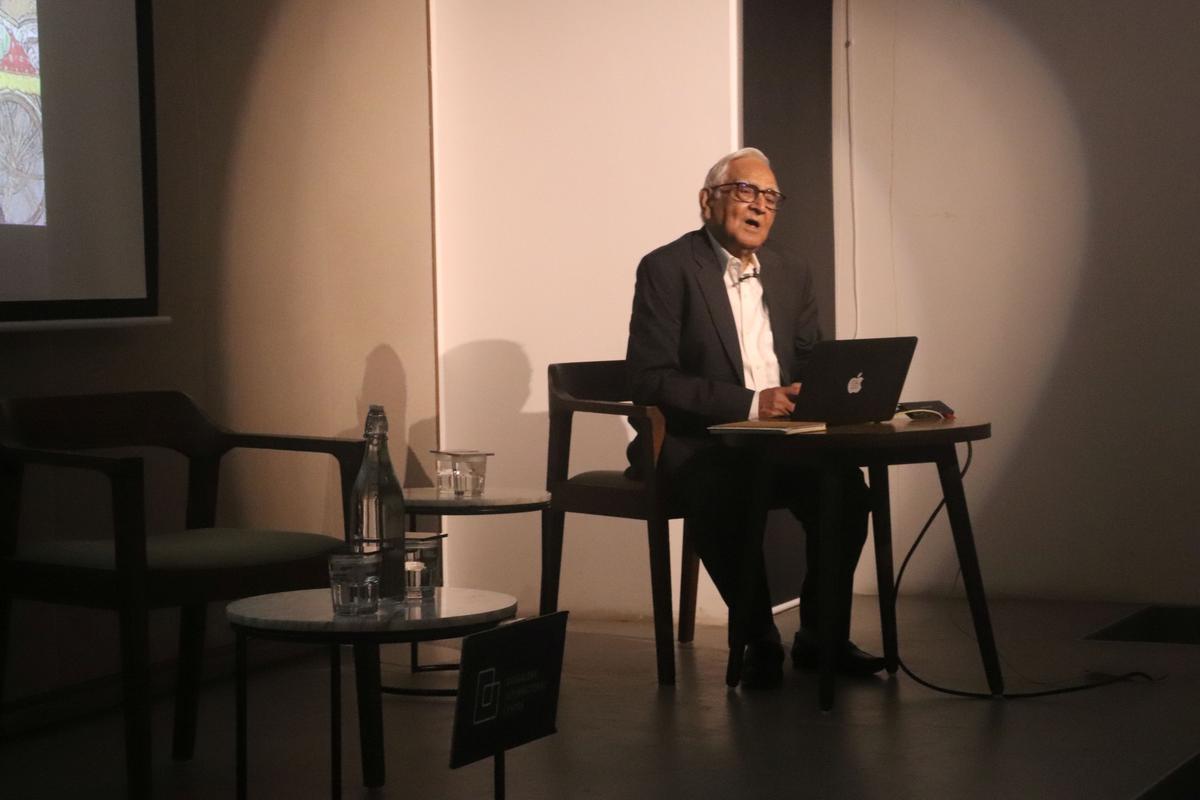Bangalore’s International Music & Arts Society’s golden jubilee celebrations have been gratifyingly numerous. Its third ‘Heritage Lecture’ by Asok Kumar Das on ‘Music, Musicians and Musical Instruments at the Mughal Court’was an appropriate subject for an institution primarily concerned with music. Asok, art historian and author, specialising in Mughal and Rajasthani art and culture,divided his talk to cover three sections, supporting his erudition with sumptuous and telling slides from the illustrated biographies of Mughal emperors, particularly Shah Jahan’s Padshahnama. The Akbarnama was not an autobiography, for, Akbar could neither read nor write and commissioned his courtier, Abu Fazl, to record his life and times. His imperial Ramayana and the Razmnama of The Book of War (Persian translation of the Mahabharata) , are richly illustrated and inscribed; these are fortunately, in the Indian Museum, “which has some very notable assets”.

Naubat Khan with a been
| Photo Credit:
Special Arrangement
During Asok’s academic journey, he encountered some rare Mughal miniature collections, as far flung as Iran, Ireland and Russia. “I became interested in how Mughal painting developed and changed under the patronage of a particular emperor. . Western material was arriving in India — works of Durer and Delacroix — were known in Mughal courts and left their influence”.
The quality of the paintings was exceptional, proving an exquisite and lavish record of the times: so fine are the faces even of onlookers that some can be identified as portraits of courtiers. So lively are the musical scenes that one can almost hear the proud blare of shehnai and nafiri in magnificent durbars and processions, or the rousing call of drums — naqqara and tabla — to battle, and triumphant anthems recording glorious victories.

Asok Kumar Das
| Photo Credit:
Special Arrangement
Music permeated almost all spheres of life — specific occasions from prayer and ritual to festivals and entertainments at banquets, baths and even during hunts. Percussion, string and wind instruments are depicted, some still recognisable (the slide of Naubat Khan shows him with a been , recognisably a rudra veena; whereas in the slide, Plato, seems to hold a harp). Many miniatures used a bird’s eye view, where the scenes at different levels have to be ‘read’, as in ‘The Birth of Prince Salim’, where the uppermost half of the painting shows the mother and her new-born with attendants — a drummer — in the adjacent terrace and views of the zenana. The section below shows another part of the palace, where the infant’s horoscope is being cast, while courtiers play a board game.
In some paintings, the lowest level shows the hoi polloi, beyond the palace gates, celebrating with music and dancers. Vocalists and instrumentalists are depicted, though their social status is undetermined. Though music played an integral part of Mughal life, any mention or depiction of the Ragmala is noticeably absent.
“Religion is but a part of Hinduism: Its cultural roots go much deeper, because emotions are so embedded in the arts. The Mughals made India their home: Babar was not a mere conqueror, he stayed on”. There was a happy fusion; they celebrated Holi, Diwali and married Rajput wives… Indian music tradition was strong andwas enriched by Mughal music. When Sher Shah returned from exile, he brought Iranian and Central Asian musical traditions with him.

Painting depicting Plato as a musician.
| Photo Credit:
Special Arrangement
Despite being known for his deep knowledge and research in his field, Asok is refreshingly unassuming, and strongly advocates the sharing of knowledge. “Dissemination of knowledge is essential. What good is it if I know something and don’t share it? Pictures are valuable educational tools of our heritage. It’s a pity that some Indian institutions with precious collections don’t have the funds and resources to allow technology to make them generally available, with online photographs, digitisation of manuscripts, etc.”
This is particularly true of miniatures, whose size and format make them difficult to view in museums and galleries, whereas slides enable a leisurely viewing of close ups.
Asok and his textile historian-wife Syamali live in Santiniketan, anchored by the still prevalent “simple living and high thinking” of the Bengali liberal intellectual.
“Mughal culture is a synthesis that endures. You can’t just wipe out our Islamic past by excising it from history textbooks: We see its influence even today, in food, costumes, music, art, architecture … History wasn’t made in a day, so it can’t be annihilated that quickly either,” says Asok.
Published – September 30, 2025 03:24 pm IST



